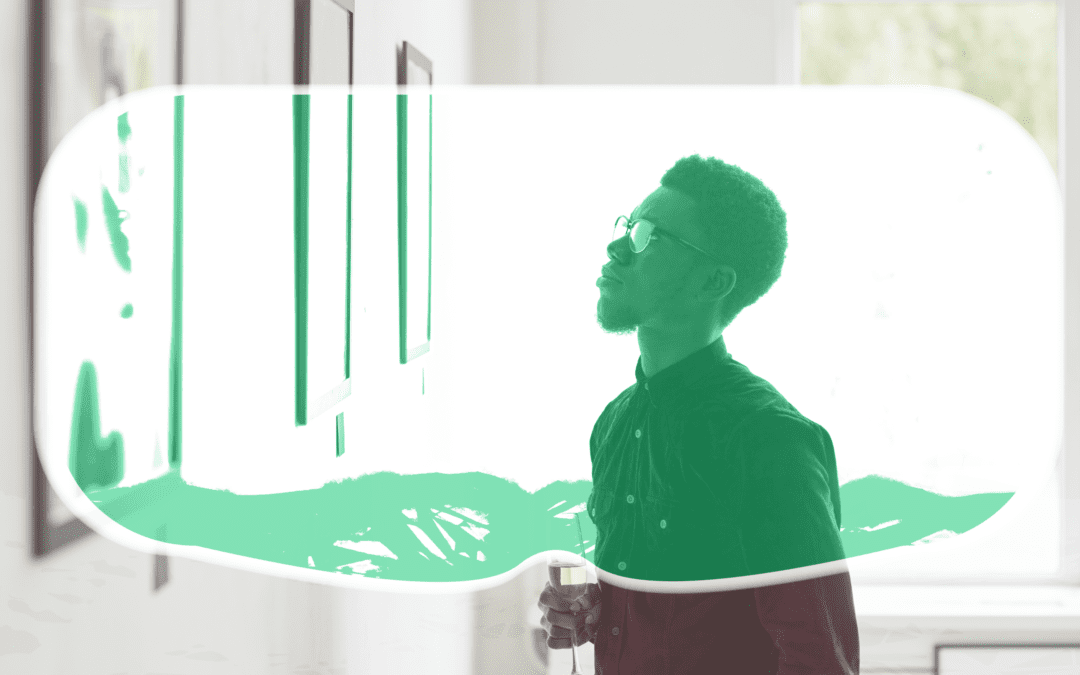What is the future of art? How will we consume it in 50 years? Is digitization the enemy of fine arts, or will it change this sphere forever?
Looking for answers to those specific questions doesn’t seem very easy, but there are certain phenomena that may indicate the direction of the artistic evolution. As new trends and technologies emerge, we see new media for sharing creative pieces of consciousness. One of them is of course digital art, which is often categorized as 3D graphics or digital illustration. It is however more than that, and the three letters can prove that.
NFT, or Non-Fungible Token is truly a sign of our times marked with different cryptocurrencies and the pursuit of finding new ways of locating our resources.
NFT meaning explained
Non-fungible means it’s unique and irreplaceable.
A token is, according to Oxford Languages, a thing serving as a visible or tangible representation of a fact, quality, feeling, or a voucher that can be exchanged for goods.
A blockchain is a system in which a record of transactions made in bitcoin or another cryptocurrency are maintained across several computers that are linked in a peer-to-peer network (Oxford Languages).
Now, for the complete description, NFT is a virtual representation of a certain value that is unique. Like a code, software, image, or piece of music.
Just like the Mona Lisa — there’s only one original painting of La Gioconda, and it definitely has a value. The main difference is that the Da Vinci’s masterpiece is not a digital good. The rest is pretty much accurate.
So, you might ask, NFT is just a form of digital art collecting? That’s right and owning a certain NFT means that you officially have the original artwork (or any piece of art) and others may only use copies. It’s verified by the blockchain that is connected to each piece, that stores the record of ownership changes.
NFT in Virtual Reality
– the future
There is something about art that is making us come closer. There are many people stating that NFT art is too distant and “not real”. For them, looking at the picture on the screen is not enough to call it art or to feel like the “collector”.
Fair point, however, we feel that any creative outcome — digital or physical — can be called art as long as it’s the effect of human sensitivity or aesthetics.
For those, who would like to come closer to the digital pieces, there are many ways virtual reality (along with AR and MR) can come in handy. Not only for personal use, but also for institutions and public showing purposes.
Speaking of cultural institutions. We can wonder about what if they would notice NFT meaning in the modern art market and present it to the masses in this form. One of the possible solutions is in fact virtual reality, which makes it easier to contemplate art personally and with a little help from good old immersion.
Imagine the showing of digital art that is located inside the museum, which has both: big screens with pieces displayed on them, as well as VR stations for those, who need to “come closer”.
The other possible way of organizing showings would be creating a museum from the scratch — a virtual one, that could be visited by VR users both stationary and from their homes. This is what we would call innovative art popularization.
Needless to say, 3D objects suitable for VR/AR/MR can also be NFTs, so virtual reality seems like a good environment for a certain type of art collectors. It is engaging and interesting, but most importantly — it is portable and has the event potential (standalone headsets can serve as the doors to VR museums we can visit from anywhere).
NFT is here to stay
– what now?
Now, if we understand how NFT works and how it could become the next big thing for virtual reality. NFT meaning is still considered niche-like, but we can agree that art collecting is not something anybody would be interested in. However, thanks to the new technology, more and more people tend to invest in digital pieces, becoming a new kind of online patrons.
As a VR studio working with talented 3D artists, we believe in the idea of virtual art as a result of hard, creative work. It’s very important to help artists — notice them, fund them and talk about how important their role is for society.
However, owning an NFT may be just another way of getting a certificate that proves the ownership of a certain valuable piece. It’s not something necessary, but surely it can appear intriguing and promising. Other than that, let’s not forget about the carbon footprint it generates from the blockchain system. In the end, what will art be if humanity wouldn’t be able to enjoy it safely or have the access to it at all?
If you want to know more about Giant Lazer’s approach to Virtual Reality, which could be useful in culture-related projects, visit our Services page.

